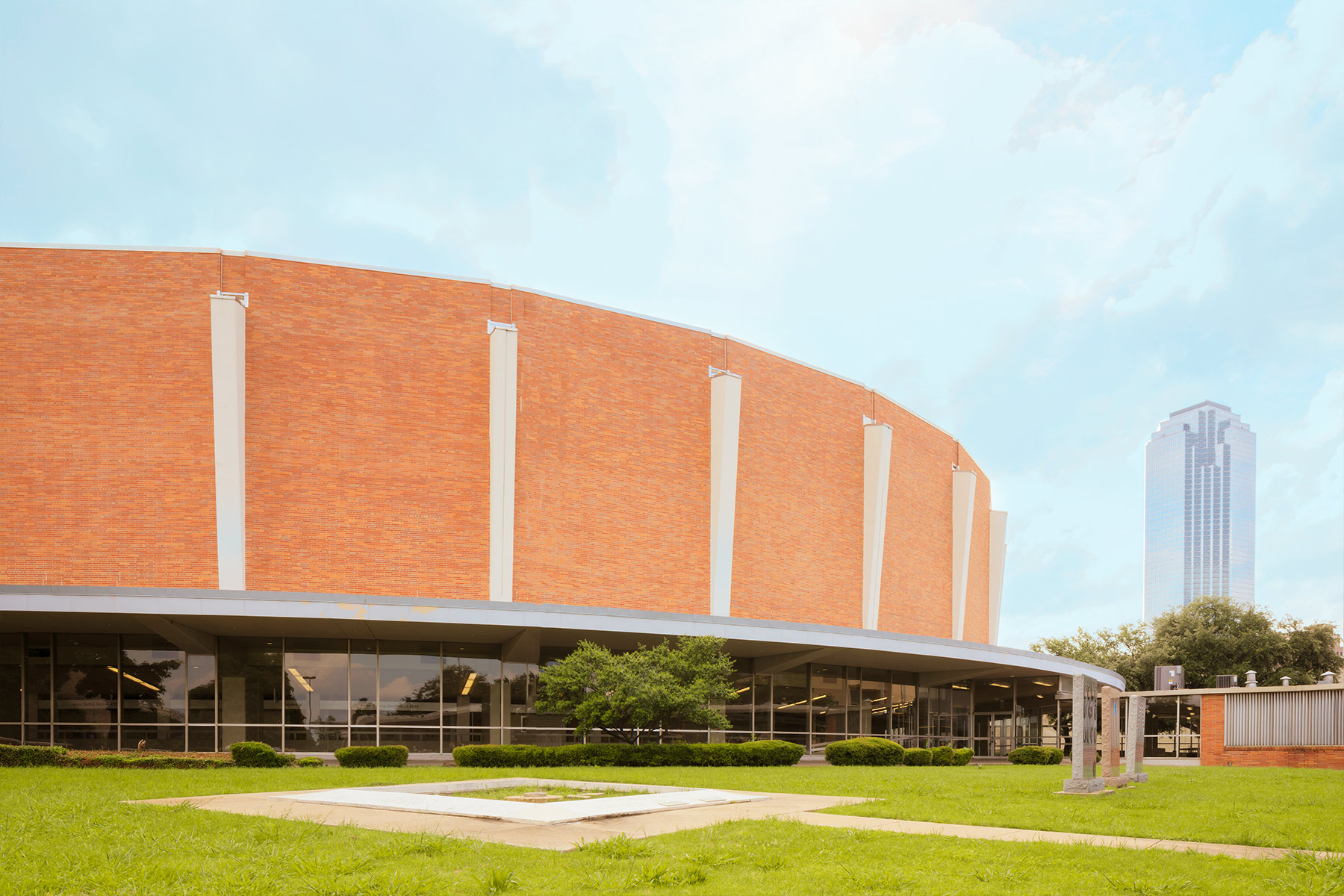Amy Walton walked away with one question after attending an event organized by the Okie Mod Squad, a group of midcentury modern architecture and design enthusiasts who documented Oklahoma City’s MCM gems: “Where the hell is something like this in Texas?”
Buildings of the period, defined by sleek lines and minimal ornamentation, are threatened by development and decay despite being relatively recent history.
Shortly after the trip to Oklahoma, Walton teamed up with statewide preservation organizations to create modTEXAS, an Instagram crowdsourcing campaign. Texans are encouraged to photograph and share midcentury modern homes, commercial buildings, signs, furniture, and decor using the hashtag #modtexas. When paired with a geotag, the photos create a midcentury modern map of the state.
The tag has been used nearly 2,000 times already. Scrolling through its history on Instagram, you’ll find gems like the Bass residence in Fort Worth and the Good Luck Gas Station in Dallas.
“We are on the cusp of the pivotal 50 years of midcentury modern design,” some of which is threatened by neglect and development, Walton says. “Our goal is to whip up a frenzy of people in Texas who love midcentury modern architecture by crowdsourcing content, and hopefully spearheading more volunteers for the sponsors.”
She compares using Instagram as a platform to a new parenting trick to help kids eat healthier. “Parents are now using spinach in cake. I’m using Instagram as a shiny ball in that way,” she says.
modTEXAS’ statewide collaborators include Preservation Dallas; the Texas Historical Commission; the North Texas and San Antonio chapters of Docomomo, an international nonprofit organization dedicated to preserving the midcentury modern aesthetic; and American Institute of Architects chapters in Corpus Christi and Dallas.
Local real estate website CandysDirt.com is also part of the project, mapping the hashtag’s use across the state. The effort also showed up in the pages of D Magazine just last month; a spread of photos—Republic Tower, NorthPark Center, St. Jude’s Chapel, a Mesquite Whataburger—dominate the two pages.

A geographic gap still exists, per the CandysDirt map. Metropolitan regions and mid-sized cities dominate the coverage, leaving rural areas and their threatened history in question. Walton may face more than an outreach barrier, however. Some communities in Texas, including on the southern border and in East and West Texas, lack basic Internet access and are less likely to have eagle-eyed Instagram users.
Other Dallas-area groups have advocated for architecture and historic preservation for years. AIA-Dallas and Preservation Dallas have hosted themed tours for years, including of midcentury sites in downtown and on annual home tours.
Elsewhere online, Roadside Architecture, a 20 year labor of love by Debra Jane Seltzer of California, is chock full of photos of commercial buildings and roadside attractions, including midcentury architecture in Texas. The site fills in some gaps, featuring structures from Amarillo to LaPorte on the Texas Gulf. But some regions lack even a full-time historic preservation organization, leaving many highlights ripe for neglect.
Walton suggests creating awareness could also make tourism bureaus aware of the robotic benefits of architectural tourism, too. Devotees of Wright and other architects travel the country just to see a singular site.
Ultimately, though, the goal is just to get people involved in preservation and “sharing the joy of design.”
But civic engagement may not be enough to save them. In June, the Dallas City Council gave the Dallas Theater Center control of the Kalita Humphreys Theatre, the only performing arts space in the U.S. designed by Frank Lloyd Wright. But preservationists, including Walton, were disappointed by the move, preferring the city and other local groups invest in rehabilitating the Turtle Creek theater to make it not just a performing arts center but a tourist destination, an architecture fan’s dream. The Dallas Theatre Center, which commissioned the building in 1959, will now need to appoint a 13-person steering committee to overhaul a master plan to restore the theater. Their lease lasts five years.
While the Humphreys is still standing, even if in desperate need of repairs, others have not been so lucky. The former Great National Life Insurance Building, built in 1963, was recently torn down. Architects and critics referred to the garden-style complex as one of the most important and innovative in Dallas. Set away from Mockingbird and Harry Hines, the concrete and stone complex was best known for its aluminum brise-soleil, shading the inside from the harsh Texas light.
Like other midcentury sites, those highlighted by modTEXAS frequently appear on local preservation groups’ annual most endangered lists. Preservation Dallas’ 2018 list included more than two dozen schools that the district is considering replacing due to how old they are. (Plans were later scrapped by Dallas ISD to tear down a handful of elementary schools, though not for aesthetic purposes.) Historic Fort Worth’s 2019 list includes downtown’s round convention center arena, which is often compared to a spaceship.
“Midcentury modern is often not considered ‘historic’ or unique enough to leave intact or even restore for future generations. They’re considered recent history,’ a term that’s often used to detract,” according to the website MidCentury.org. The term easily allows city staff to pave the way for demolition and give properties to developers, even if public and private grants to exist to help with costly rehabilitation.
In the case of a project like Walton’s, the photos may be all that is left to chronicle an extraordinary time for architecture in the state.






